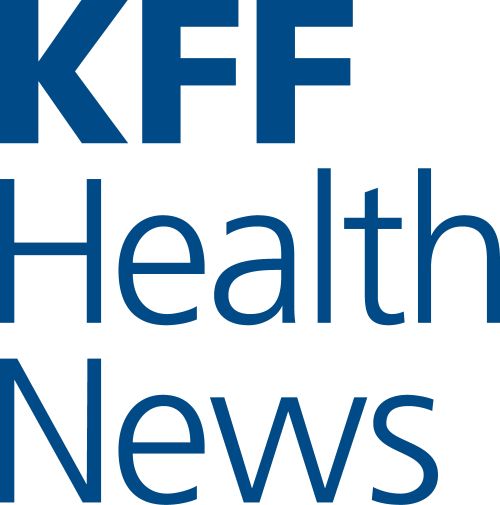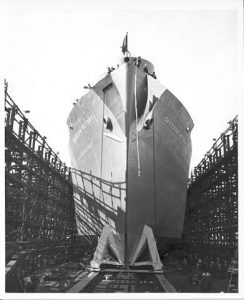Our production partners: KFF Health News.
 In Season Two, KFF Health News , known then as Kaiser Health News , came aboard as an editorial partner. Three things to know about them.
In Season Two, KFF Health News , known then as Kaiser Health News , came aboard as an editorial partner. Three things to know about them.
First, what they’re not: KFF Health News is not affiliated with the giant health care provider Kaiser Permanente. They share an ancestor , which is a fun story I’ll get to in a little bit.
Second, what they are: A GREAT non-profit newsroom covering health care in America, a program of KFF, formerly the Kaiser Family Foundation. (There’s that name again. Hang in there, the story’s coming.)
Third: Their editor-in-chief is one of the people who inspired this show.
When I first started working on An Arm and a Leg , like, before it even had a name , people told me: There’s this book you have to read, called An American Sickness: How Healthcare Became Big Business, and How You Can Take It Back.
I got the book, and they were 100% right.

The author, Elisabeth Rosenthal, was a New York Times reporter for more than 20 years, and spent her last few years at the paper covering the cost of health care. Oh, also: She’s an M.D.
A few years ago, she left the Times, published the book, and became editor-in-chief at Kaiser Health News.
The book is a map of everything this show is looking at. And the daily email that Kaiser Health News puts out features a ton of amazing reporting, every day.
So, I wanted to get in touch with Elisabeth Rosenthal, but it took me a while to work up my nerve.
Like: Until midway through Season One, when one of her reporters, Jenny Gold, was featured as one of the main voices in our episode about Why Health Insurance Actually Sucks.
The morning before we posted that episode, I wrote Elisabeth Rosenthal a note that said, essentially: Hi there. Big fan. Interviewed one of your reporters, posting the episode tonight, hope you like it, would love to talk sometime.
She wrote back, a few hours later, with a note that started: Hi Dan, Good to hear from you actually, I was going to reach out to you.
And here we are.
KFF Health News our co-producer , which means they’re providing some financial support , not our whole budget, by a long shot, but a big help , and editorial support too. I talk every week with Senior Producer Zach Dyer, he’s a trusted advisor and colleague, and he frequently connects me with other folks at KFF.
Meanwhile, An Arm and a Leg remains very much an editorially independent project: Our agreement with KFF specifies that final editorial decision-making belongs to us.
It’s just that we’ve got some incredibly awesome friends and allies.
So, you may be asking:
Where did KFF Health News come from, and why are they so great?
Glad you asked! Please strap in.

Henry J. Kaiser was what people used to call an “industrialist.”
 He built a lot of U.S. cargo ships for World War II, and he helped build the Hoover Dam. He got into smelting aluminum, making steel, all kinds of stuff. (He also started a health-care program for his shipyard workers that became Kaiser Permanente, so that’s that deal.)
He built a lot of U.S. cargo ships for World War II, and he helped build the Hoover Dam. He got into smelting aluminum, making steel, all kinds of stuff. (He also started a health-care program for his shipyard workers that became Kaiser Permanente, so that’s that deal.)
Along the way, Henry Kaiser started a family foundation, and when he died in the 1960s, he left the foundation half his money. It gave away money like a regular foundation until 1990, when Drew Altman became their CEO.
At that point, the KFF , known at the time as the Kaiser Family Foundation , turned itself into a different kind of organization: It stopped giving money away, and instead hired a bunch of health policy experts, and had them do their thing. The idea was to become a place where reporters and policy-makers could get solid, non-ideological information about the U.S. health care system.
(As a reporter in earlier jobs, I’d called them as sources. Editors and colleagues said they were solid, and the information definitely seemed super-straight-up. But nobody’d ever told me this story, and I always wondered: Honestly, what’s the deal? When they invited me to work together, I made sure to find out. OK, back to the story…)
By 2009, the Foundation noticed: It wasn’t getting as many calls from reporters , because newsrooms were shrinking, and journalists were getting laid off.
So Altman created Kaiser Health News , renaned KFF Health News in 2023 , a newsroom to fill that gap, putting out the kinds of stories that commercial newsrooms just weren’t doing as much, or as well, as they used to.
They hired a bunch of amazing reporters and editors , the word “award” appears dozens of times on the staff-bios page , and had them start putting out stories.
To get those stories out there, Kaiser Health News makes its reporting available for free, under Creative Commons licenses, and it partners with news organizations like NPR, the New York Times, CNN, the Chicago Tribune, the Tampa Bay Times, really anywhere , to put those stories out.
That’s who they are, and that’s why I couldn’t be pleased-er that they are co-producing An Arm and a Leg.
